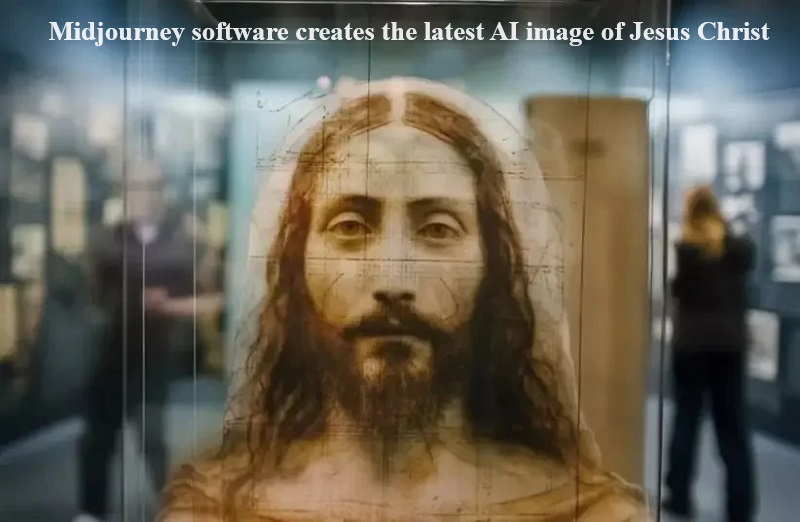
In a novel application of artificial intelligence, an image resembling the famous Shroud of Turin has been generated, apparently matching the marks on the controversial cloth.
Midjourney software created the latest AI image of Jesus Christ, commissioned by the Daily Star to commemorate the 90th anniversary of the first public display of the Shroud of Turin.
In this stylized image, a man is depicted with long hair and a beard. Author Lee Strobel shared the picture on X, stating, “According to Artificial Intelligence, this is what Jesus looked like if the Shroud of Turin is authentic.”
AI software Midjourney has been used for such purposes before, with Duncan Thomsen noting, “The results are hilarious, and everyone I’ve shared my work with can’t believe how real the pictures really look,” as per the New York Post. He utilized the AI software through the Discord app.
The history of the famed shroud is long and contentious, with some believing it to be the burial cloth of Jesus Christ. The new AI image of Jesus Christ has sparked controversy due to its connection with the Shroud of Turin, as reported by CBN.
Concerns have been raised about the accuracy of the image. Author Clinton S. Thomas told CBN News, “The AI, depending on its access, was likely to reference several popular images of Jesus in addition to the Shroud before making a picture. The Shroud gives no specific indication of eye color, skin color, hair color, or clothing – this image includes all which indicates it is pulling from various images.”
Furthermore, filmmaker Christian Newlands pointed out, “There’s no confirmed historical record of Jesus having long hair though. The long hair descriptions stem from early depictions of Him from paintings of people in that time. In addition to His depiction, the description of Him in the book of Revelation is a description of Jesus resurrected, not living.”
The Shroud of Turin has an intriguing history, with some suggesting it was owned by Byzantine emperors before disappearing during the Sack of Constantinople in 1204. It later came into the possession of the Order of Knights Templar, displaying an image of a bearded man on linen or cotton.
The shroud’s ownership eventually passed to the House of Savoy in 1453. In 1532, the shroud was damaged in a fire in a chapel in Chambéry, Savoy’s capital, and was subsequently repaired with patches by nuns from the Order of Saint Clare.
In 1578, the Duke of Savoy relocated the shroud from Chambéry to Turin in northern Italy, where it has remained ever since, housed in the Chapel of the Holy Shroud at Turin Cathedral.

Post Your Comments